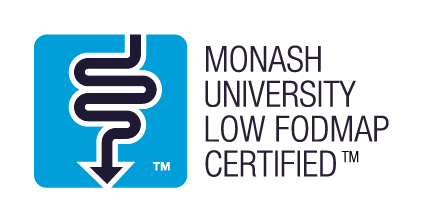
Allergies. They’re annoying, confusing, sometimes painful, and whether it’s peanuts, shellfish or plain ol hayfever they can leave you feeling pretty average.
You might be surprised to hear that we Aussies are the number one food allergy capital in the world with one in 10 Australian babies and 2% of Aussie adults affected by a food allergy with numbers only rising. So, are we experiencing an allergy epidemic and is there a way to prevent them in the first place?
Before we dive into the science, let’s cover the basics.
What is a Food Allergy?
A Food Allergy is an ‘adverse immune response to protein found within certain types of foods that are separate from food intolerances, reactions to toxic contaminants or pharmacologically active food ingredients’1.
The body reacts by releasing chemicals that trigger a broad range of signs and symptoms involving different areas of the body. Thinking back to Primary School you may recall seeing the “Think F.A.S.T” acronym but if you need a reminder it outlines how allergies may affect the body:
- Face: itching, redness, swelling
- Airway: trouble breathing, swallowing, speaking
- Stomach: pain, vomiting, diarrhoea
- Total Body: hives, rash, weakness, paleness, sense of doom, loss of consciousness
Those that have parents or siblings with a pre-existing allergy might be in for some bad news as risk of developing allergies are 60% genetically determined and 40% factored in by the environment and lifestyle behaviours (such as changes in gut microbiota, exposure to processed or ultra-processed foods, low breastfeeding rates and delayed introduction of solid foods to infants).
Common Types of Food Allergies
90% of food allergies are caused by peanuts, tree nuts, milk, eggs, sesame seeds, fish, shellfish, soy, lupin and wheat.
Lesser known common allergies can also include:
- The Nightshade family (i.e. capsicum, eggplants, potatoes, tomatoes, cayenne peppers).
- An association with Oral Allergy Syndrome where pollen is mis-recognised by the immune system causing a reaction. Often seen with fresh fruits such as apples, cherries, plums, as well as kiwi fruit, melons, & bananas.
Allergies and Food Labelling
Due to the commonality and potential severity of reactions to the allergens just mentioned, these must be declared on food labels, whether they are used as an ingredient incorporated into a dish or used as an additive or a processing aid.
Labelling that indicates a ‘may contain’ claim are voluntary and precautionary statements that are subject to the food manufacturers choice.
As most protein allergens are unable to be broken down by heat or acid they often remain intact even after processing, cooking, storage and digestion2-4 so it is important for food manufacturers to take every precaution necessary to minimize allergens and cross contamination.
What’s in the News?
To date, there is no known cure for allergies so the best form of management uses a three-pronged approach: “Awareness, Avoidance and Action”. That is nutritional education, strict dietary avoidance and emergency treatments in case of severe reactions.
Research into the area is vastly growing, with researchers looking into a range of therapies that could be used to treat allergies in the future. These studies are carried out under strict medical supervision, and include:
- Oral Immunotherapy where allergens are gradually introduced under medical supervision to ‘desensitize’ the reaction. It involves ingesting allergens in gradually increasing doses until tolerance can be built.
- Extensively heating milk and egg to the point of ‘baking’ for children with transient milk and egg allergies. Based off two clinical trials5-6 that indicated an 80% tolerance to extensively heated milk and egg products during an oral challenge. However, this was strictly under medical supervision and subject to measuring flaws.
- Re-engineering food proteins currently researched in animal studies
- Herbs used in Traditional Chinese Medicine7
- Prebiotics and Probiotics8-11
Children and Food Allergies
For some, food allergies can develop during infancy or early childhood whilst for others, it can appear later on despite eating the same food throughout their life. Most children with milk or egg allergies often outgrow these allergies before their 10th birthday12. However, those with peanut, tree nuts, fish and shellfish allergies are often lifelong13.
Interestingly, one study found that children with eczema or egg allergies who consumed peanuts before the age of 1 were less likely to develop peanut allergies at 5 years of age compared to those who had avoided peanuts. Of course, effectiveness differs between each child and reactions are still common14-16.
Maternal Diet and Allergies – Can we prevent them?
In the past, mothers were advised (whether it be through hearsay or not) to avoid allergenic foods during pregnancy and breastfeeding. This was not only exhausting for nursing mothers but also impacted on the nutritional status and motivation to breastfeed as well. These guidelines have now been amended because despite the idea of safeguarding a potential food allergy, prevalence and a decline in allergies just wasn’t apparent4. In fact, some have suggested that in hindsight, this elimination diet may have been counterproductive and increased the likelihood of a food allergy17-19 As of 2016, the Australasian Society of Clinical Immunology and Allergy have changed their guidelines and now recommend including allergenic foods during pregnancy and breastfeeding.
So, is there a way to prevent them? Perhaps. There has been a large shift to introduce allergens from 4 months of age20. Other areas of focus also include exclusive breastfeeding21-22 for the first 6 months of life23-26 and introducing small amounts of solid foods while breastfeeding27-28. This is an area of ongoing research and it can be confusing with all the advice about what to do & not do, so talk to your doctors about what will be best for you & your baby.
Is this an Allergy Epidemic?
We’re now gaining more understanding behind allergies more than ever before. We know that Australia has the highest rate of allergies compared to every other country which poses the question of what’s causing this to begin with? The answer? Scientists aren’t sure at this point. One of the biggest questions surrounding the idea of an epidemic is whether the rates have increased, or is it that we have a better understanding and ability to diagnose allergies? Some researchers have suggested a dependency on ‘antibiotics, fewer microbes or a cleaner environment’, however despite the implications more research is warranted.
Dineamic & Food Allergies
At Dineamic, we catered to a range of food allergies and intolerances (as many as possible to be honest!). We have options that are:
- Gluten Free
- Dairy Free
- Low FODMAP
- Nut Free
We do operate with some allergens in our kitchen, which means that we cannot guarantee that there are no traces present in our meals. We do take every precaution to minimise cross-contamination in a number of ways including ongoing staff training, HACCP certified production, separate shelving of allergenic ingredients and more. You can trust that we’re here to help.
Need allergy-friendly suggestions? See our suggestions below, or use the filters on our menu to see Gluten Free & Dairy Free options.
- All Mains are Gluten Free and Dairy Free
- All Soups are Dairy Free and Gluten Free (with the exception of the Beef, Mushroom and Pearl Barley Soup) and free from your main allergens
- Beef Bolognese, Beef Chilli Con Carne, Beef Meatballs with Napoli Sauce, Chicken Burrito Mix, Korma Lamb, Moroccan Lamb and Slow Cooked Mediterranean Beef, are also free from your main allergens.
If you have a specific allergy to an ingredient and need help navigating our menu check out the full list of ingredients on the product page of the website or get in touch with us.
References (yep… there’s a lot for this one!)
- Waserman S & Watson W. Food Allergy. Allergy, Asthma and Clinical Immunology 2011 7(1):S7
- Sicherer SH, Sampson HA: Food allergy. J Allergy Clin Immunol. 2006, 117 (2 Suppl Mini-Primer): S470-475.
- Sicherer SH, Sampson HA: Food allergy. J Allergy Clin Immunol. 2010, 125 (2 Suppl 2): S116-125.
- Connors L, Waserman S: Food allergy — the nuts and bolts. Parkhurst Exchange. 2010, 18-Available at: http://www.parkhurstexchange.com/clinical-reviews/apr10/food-allergy Accessed October 14, 2010
- Nowak-Wegrzyn A, Bloom KA, Sicherer SH, et al. Tolerance to extensively heated milk in children with cow’s milk allergy. J Allergy Clin Immunol 2008;122:342-7.
- Lemon-Mule H, Sampson HA, Sicherer SH, Shreffler WG, Noone S, Nowak-Wegrzyn A. Immunologic changes in children with egg allergy ingesting extensively heated egg. J Allergy Clin Immunol 2008;122:977-83
- Li XM, Zhang TF, Huang CK, et al. Food allergy herbal formula -1 (FAHF-1)blocks peanut-induced anaphylaxis in a murine model. J Allergy Clin Immunol 2001;108:639-46
- Prescott SL, Bjorksten B. Probiotics for the prevention or treatment of allergic diseases. J Allergy Clin Immunol 2007;120:255-62.
- Prescott SL, Tang ML; Australasian Society of Clinical Immunology and Allergy: The Australasian Society of Clinical Immunology and Allergy position statement: summary of allergy prevention in children. Med J Aust 2005; 182: 464–467.
- Schiavi E, Barletta B, Butteroni C, Corinti S, Boirivant M, Di FG. Oral therapeutic administration of a probiotic mixture suppresses established Th2 responses and systemic anaphylaxis in a murine model of food allergy. Allergy 2010
- De Benedetto A, Rafaels NM, MCGirt LY, Ivanov A, Georas SN, Beck LA. Tight junction defects in atopic dermatitis. J Allergy Clin Immunol 2010
- Wood RA: The natural history of food allergy. Pediatrics. 2003, 111 (6 pt 3): 1631-1637.
- Hourihane JO, Roberts SA, Warner JO: Resolution of peanut allergy: case-control study. BMJ. 1998, 316: 1271-1275. 10.1136/bmj.316.7140.1271.
- Staden U, Rolinck-Werninghaus C, Brewe F, Wahn U, Niggemann B, Beyer K. Specific oral tolerance induction in food allergy in children: efficacy and clinical patterns of reaction. Allergy 2007;62:1261-9.
- Patriarca G, Nucera E, Roncallo C, et al. Oral desensitizing treatment in food allergy: clinical and immunological results. Aliment Pharmacol Ther 2003;17:459-65.
- Morisset M, Moneret-Vautrin DA, Guenard L, et al. Oral desensitization in children with milk and egg allergies obtains recovery in a significant proportion of cases. A randomized study in 60 children with cow’s milk allergy and 90 children with egg allergy. Allerg Immunol (Paris) 2007;39:12-9.
- Fiocchi A, Assa’ad A, Bahna S; Adverse Reactions to Foods Committee; American College of Allergy, Asthma and Immunology: Food allergy and the introduction of solid foods to infants: a consensus document. Adverse Reactions to Foods Committee, American College of Allergy, Asthma and Immunology. Ann Allergy Asthma Immunol 2006; 97: 10–20
- Lack G, Fox D, Northstone K, Golding J, Avon Longitudinal Study of Parents and Children Study Team: Factors associated with the development of peanut allergy in childhood. N Engl J Med 2003; 348: 977–985.
- Lack G, Golding J: Peanut and nut allergy. Reduced exposure might increase allergic sensitisation. BMJ 1996; 313: 300.
- Du Toit, G., et al. 2015. Randomized trial of peanut consumption in infants at risk for peanut allergy. New England Journal of Medicine 372 (9):803–13.
- Chandra, R. K. 1997. Five-year follow-up of high-risk infants with family history of allergy who were exclusively breast-fed or fed partial whey hydrolysate, soy, and conventional cow's milk formulas. Journal of Pediatric Gastroenterology and Nutrition 24 (4):380–8.
- Saarinen, U. M., and M. Kajosaari. 1995. Breastfeeding as prophylaxis against atopic disease: prospective follow-up study until 17 years old. Lancet 346 (8982):1065–9.
- Kramer MS, Matush L, Vanilovich I, Platt R, Bogdanovich N, Sevkovskaya Z, Dzikovich I, Shishko G, Mazer B; Promotion of Breastfeeding Intervention Trial (PROBIT) Study Group: Effect of prolonged and exclusive breast feeding on risk of allergy and asthma: cluster randomised trial. BMJ 2007; 335: 815.
- Greer FR, Sicherer SH, Burks AW; American Academy of Pediatrics Committee on Nutrition; American Academy of Pediatrics Section on Allergy and Immunology: Effects of early nutritional interventions on the development of atopic disease in infants and children: the role of maternal dietary restriction, breastfeeding, timing of introduction of complementary foods, and hydrolyzed formulas. Pediatrics 2008; 121: 183–191.
- Agostoni C, Decsi T, Fewtrell M, Goulet O, Kolacek S, Koletzko B, Michaelsen KF, Moreno L, Puntis J, Rigo J, Shamir R, Szajewska H, Turck D, van Goudoever J; ESPGHAN Committee on Nutrition: Complementary feeding: a commentary by the ESPGHAN Committee on Nutrition. J Pediatr Gastroenterol Nutr 2008; 46: 99–110.
- Kramer MS: Breastfeeding and allergy: the evidence. Ann Nutr Metab 2011; 59(suppl 1): 20–26.
- Grimshaw, K. E., et al. 2013. Introduction of complementary foods and the relationship to food allergy. Pediatrics 132 (6):e1529–38.
- Levin, M., et al. 2016. Allergy and infant feeding guidelines in the context of resource-constrained settings. Journal of Allergy and Clinical Immunology









